From bustling harbour life and bathing spots to Christmas traditions and wartime history, Drøbak offers far more than its size suggests.
Sailing north on the overnight ferry from Copenhagen to Oslo, I woke early and headed out on deck. The Oslofjord was calm in the morning light, the water shimmering as small towns slid past on either side.
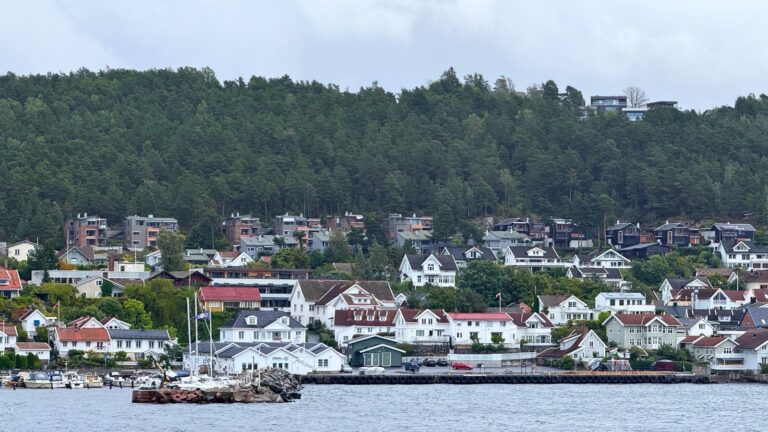
As we approached Drøbak, I found myself leaning over the rail to take a closer look. Nestled on the fjord’s eastern shore, the little seaside town looked as inviting as I remembered it.
Seeing it again from the water brought back memories of a bus trip I had made there 12 years ago, on one of those Norwegian summer days when the sun shines from morning to night. It's one of the best day trips from Oslo, and I can't wait to return.
A Summer Trip to Drøbak
Back then, Gerry and I decided to make the most of the weather. Neither of us owned a car, so we packed a picnic and jumped on the bus from Oslo.
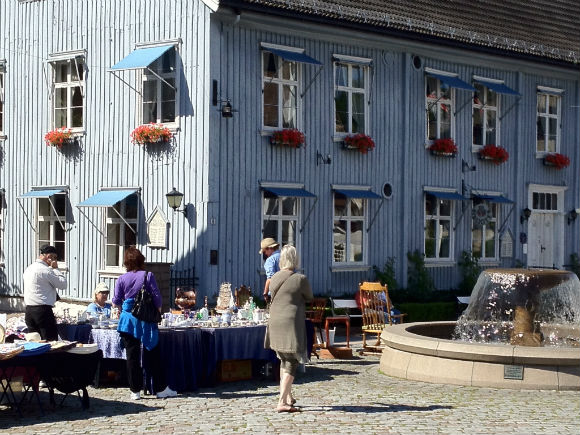
Less than an hour later, we stepped off into Drøbak’s picturesque town square, where market stalls filled the sunshine and locals lingered over coffee.
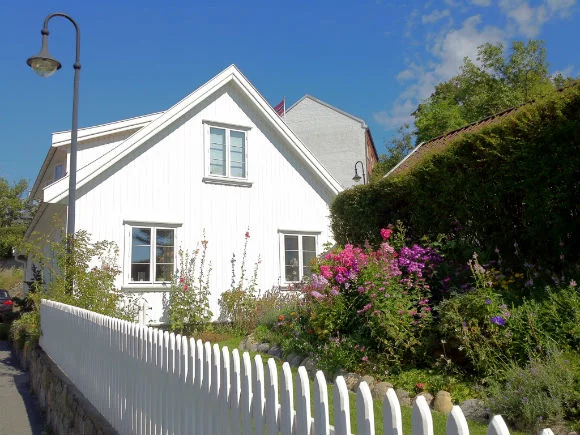
From there it was only a short stroll down to the harbour, where the whole town seemed to be busy with their boats.
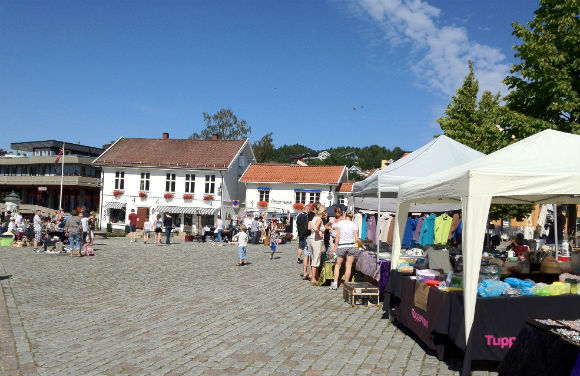
We wandered out along a small causeway, stopping to admire some playful statues in the water and to take in the wide view of the fjord.
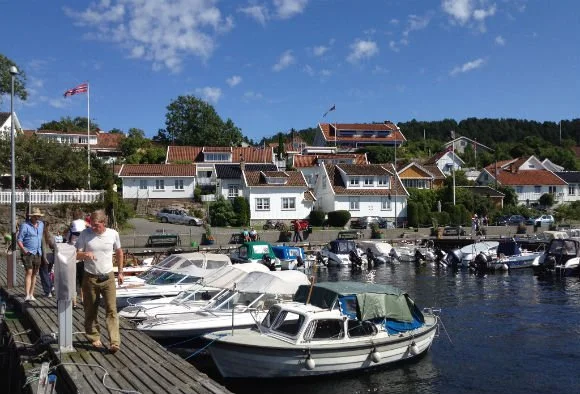
Although Drøbak has long been known as a sun trap for Oslo residents, the streets and harbour were surprisingly quiet. We soon discovered where everyone had gone.

Following a narrow path led us to a wide grassy bank by the water, where people were stretched out on towels, shirtless lads were playing volleyball, and children were shrieking with delight as they jumped from the diving boards into the fjord.
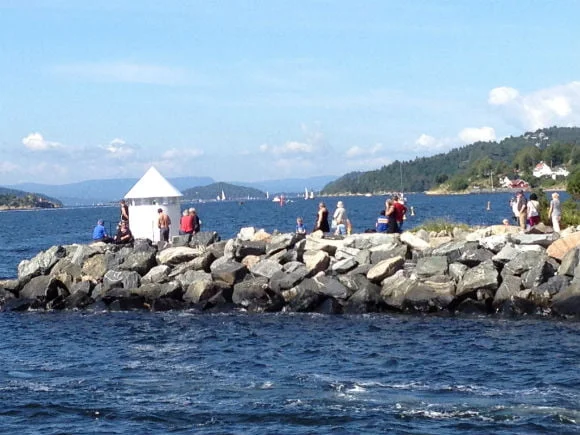
A little further along, a small sandy beach was crammed with people enjoying the day. We claimed a spot on the grass, opened our picnic, and felt very glad we had made the trip.

The only regret was that by the time we went in search of the famous Drøbak Christmas shop, it had already closed for the evening. Tregaardens Julehus (also known as ‘Christmas House') is in fact open year-round, selling ornaments, gifts and even hosting Santa’s post office.

And although we had hoped to return to Oslo by ferry, the schedule didn’t work in our favour, so we took the bus back instead.
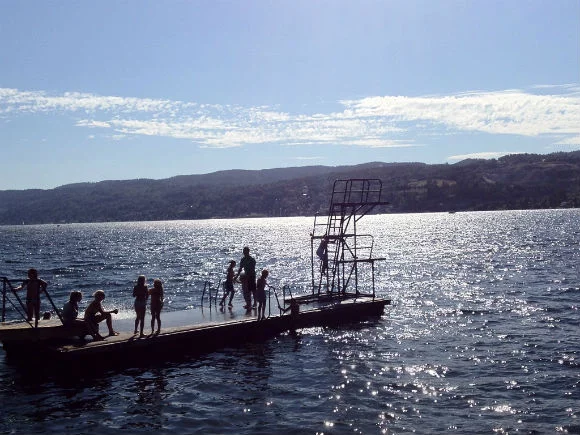
Still, it gave us every reason to plan a return visit, one that has been on my mind ever since I saw Drøbak again from the deck of the Copenhagen ferry.
Oscarsborg Fortress and the Battle for the Oslofjord
As our ferry slid past Drøbak that morning, it also passed close to a place forever linked with the town: Oscarsborg fortress.
Perched on a small island in the middle of the Oslofjord, the fortress has guarded the approaches to Oslo since the mid-19th century. From the deck, I could just make out the stone walls and gun emplacements that once played a dramatic role in Norway’s wartime history.
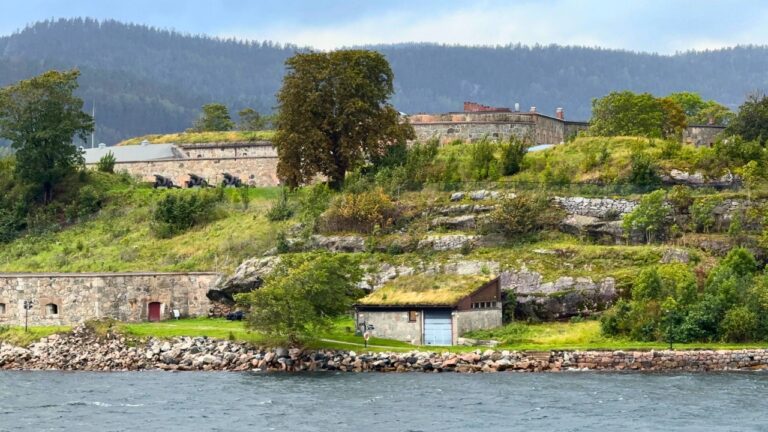
On 9 April 1940, during the German invasion of Norway, the fortress opened fire on the German cruiser Blücher as it attempted to sail up the fjord towards Oslo. The cruiser was hit by both cannon fire and torpedoes and sank in the fjord.
That single act delayed the German advance long enough for Norway’s government and royal family to escape the capital. It remains one of the most famous episodes of modern Norwegian history, and it all unfolded within sight of Drøbak.
Today, Oscarsborg is a peaceful place to visit. Ferries run regularly from Drøbak to the island, bringing visitors who want to explore its military history and enjoy its natural beauty.
You can walk through the old fortifications, learn about the story of the battle, and wander across a surprisingly green island where the past feels very present.
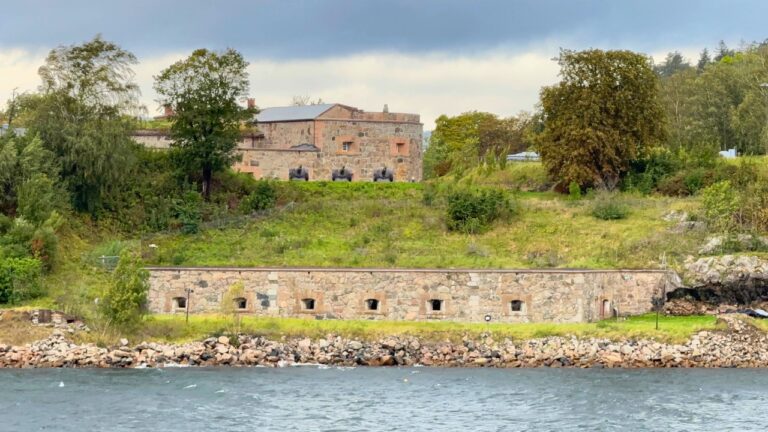
In summer, cultural events such as outdoor concerts and theatre performances also take place within the fortress walls, giving the island a very different atmosphere from its days as a military stronghold.
Next time I return to Drøbak, visiting Oscarsborg will be at the top of my list. Seeing the fortress from the water only reinforced just how significant this quiet corner of the Oslofjord really is.
Practical Tips for Visiting Drøbak
Drøbak makes for one of the most enjoyable day trips from Oslo. Regular buses cover the journey in under an hour, while in summer you can also travel by boat for a more scenic approach along the Oslofjord.
Once there, you’ll find a lively harbour, bathing spots popular with locals, and cozy streets lined with galleries, cafes and, of course, the year-round Christmas shop.
Add in the short ferry ride to Oscarsborg fortress, and it’s easy to see why this little seaside town holds such a big place in Norwegian history and culture.

